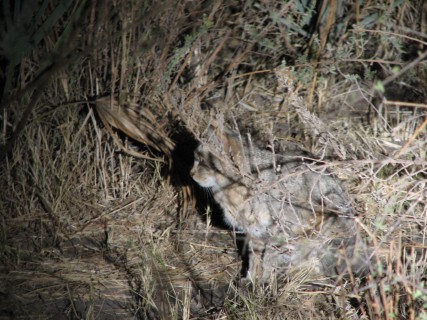
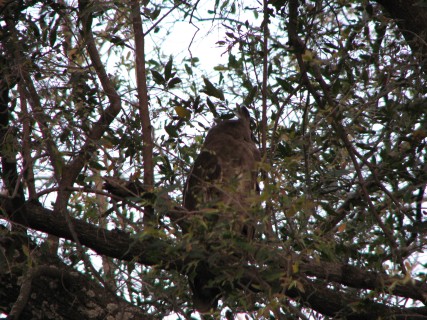
The wind overnight was probably about 30 mph, with gusts of 50 mph, and it rained a bit, so we didn't get the best of sleep, but it was okay. Plus, we didn't get eaten by any animals. On the way back, we saw a couple genets, which we heard mating a couple minutes later. We saw an African Wild Cat, which looks just like a housecat. We saw a hyena near camp walking down to the drinking hole. We also saw another giant eagle owl.
 |
 |
We left for our morning drive a little later than usual, probably because Newman and Fanie were not ready because of the fact they were out with us at the hide. It was a relatively light day for game, so it was no matter. The clouds were still out, which made for a nice sunrise. We saw several birds again, including some big ones. We saw a Brown Snake Eagle on top of a tree. It is the only eagle that can sit completely upright – others sit somewhat hunched over, and look down as opposed to out. Because of this, the Brown Snake Eagle can see about 10x better. We also saw a Bateleur Eagle atop a different tree – it is one of the eagles that stays in the area year round, as opposed to migrating.
 |
 |
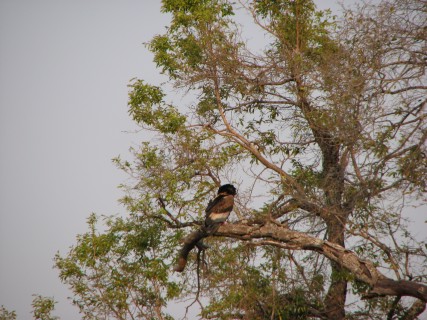 |
We saw another large group of impala, and Newman told us they were standing in front of a paperbark acacia, one of the many species in the area. The morning was saved from mediocrity by four baby giraffes, ranging in age from 2 weeks to a month. One of them was feeding, which was a little odd because the baby had to duck a bit to get under the moms. Newman taught us some more stuff, first about how elephant footprints work, and how the front footprints are round while the back are oval. He also taught us how trees deal with all the salts in the water – they move all the salt water to one branch at a time, leaving fresh water for the other branches. One branch at a time dies, and then the tree picks a new branch, and this continues until the tree is out of branches, which takes quite some time.
 |
 |
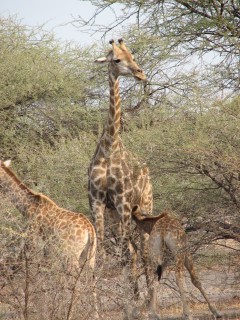 |
 |
We went to the dog den, and they were not in but we did see another African Wild Cat. Shortly before getting back to camp, we came upon a large group of Zebra, Baboons, and Impala all walking down to the water near camp. One of the baboons was being carried piggy-back by its mother. We had lunch with Newman and Fanie one last time, wished Fanie luck. Crystal bought a stuffed animal dog, we named it Newnie, combing the names Newman and Fanie. On our way to our tent, we noticed there was an elephant in camp, which the staff called Tsunami.
 |
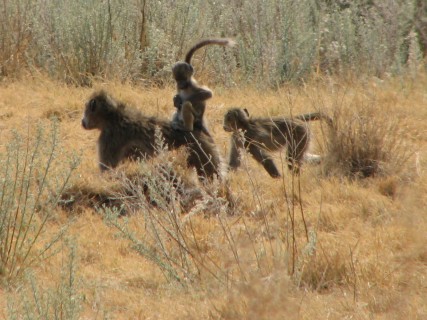 |
 |
We actually saw more game on our way to the airport than we did on the morning drive – lots of impala, flying warthogs (we scared it when we drove around a corner, and it sprung into action), lots of elephants (including ones playing in the mud, and warthogs fighting. The flight to Xigera was short and uneventful.
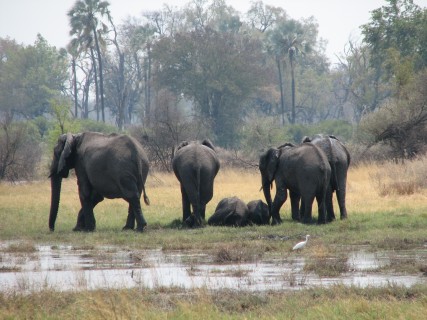 |
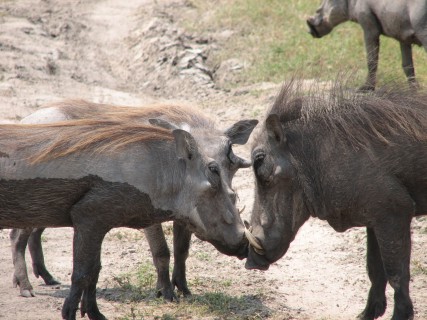 |
We noticed how much greener it got on our short flight to Xigera, with more water as well. We were greeted by Thompson, our guide. He had recommended some excursions identical to what we wanted to do, so that was good. On the drive into camp we saw a Bushbuck, which came extremely close to the vehicle, posing several times for photos. We also saw a Black Colored Barber, which had a bright red face, and a Hoopoe, which had a mohawk. We also learned about the feverberry tree, which is used to treat fevers and also to temporarily paralyze fish when fishing. The scenery was much more lush than either Selinda or Chitabe, with date palms and ferns and papyrus among other items.
 |
 |
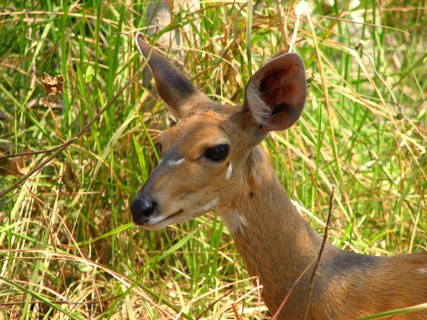 |
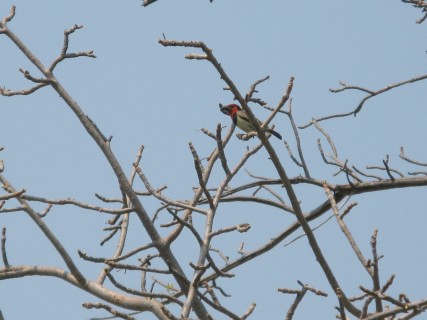 |
 |
The lodge itself was more lush as well, plus it was very nicely laid out – probably nicer again than either Selinda and Chitabe. The lodge was open and roomy, and the view was gorgeous. Our tent was very nice as well, on par with Selinda and nicer than Chitabe. The main area was roomy, and the bathroom area, with an outdoor shower in the very back. The view out the front was over a seasonal marshland. On our way to our tent, we passed another nearby elephant.
 |
 |
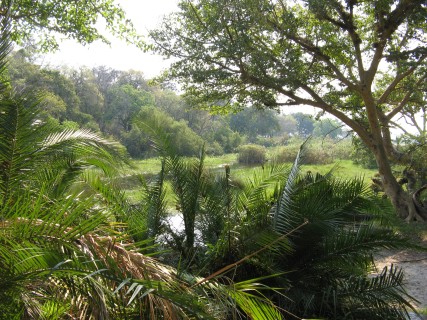 |
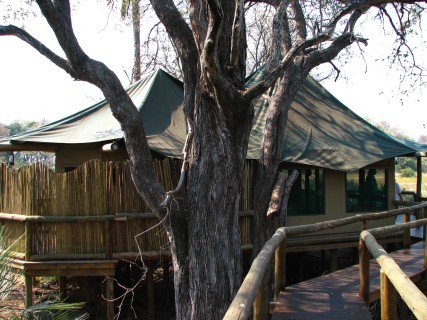 |
 |
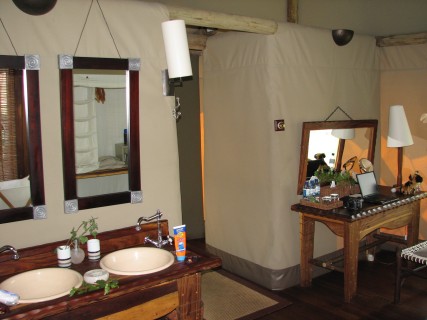 |
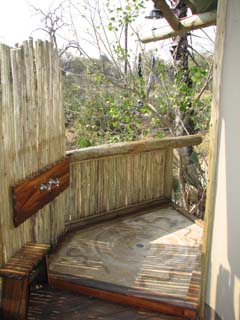 |
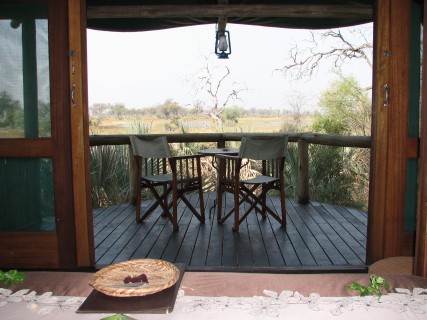 |
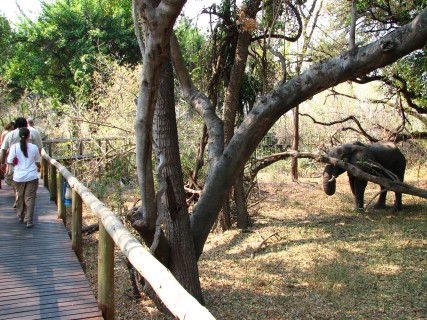 |
We made our way to the lounge for tea, which was good, and then set off on our Mokoro trek.. We traveled down the channel in front of the lounge, heading north. The sides were lined with papyrus, which we learned acts as a filter for the water. There were also plenty of swamp ferns, which we learned are used to cure upset stomachs. Thomson explained to us how Hammercop nests have two chambers, and are actually shaped like an igloo, with the same type of opening as well. Crystal got a photo of a malachite kingfisher. The only animals we saw (besides fish and birds) were several large giraffes that were grazing on tree branches. There were a number of Fish Eagles along the sides of the channel.
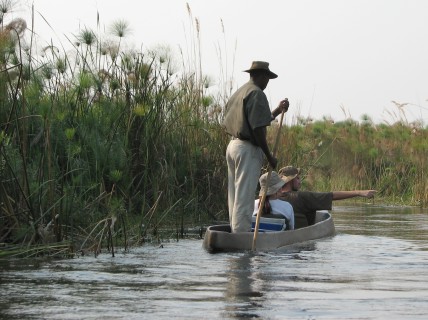 |
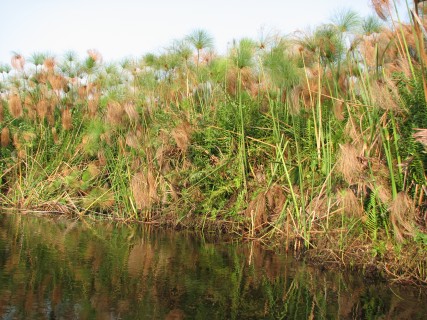 |
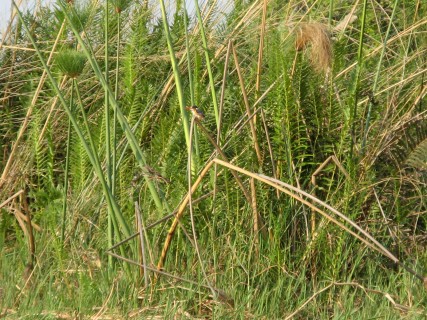 |
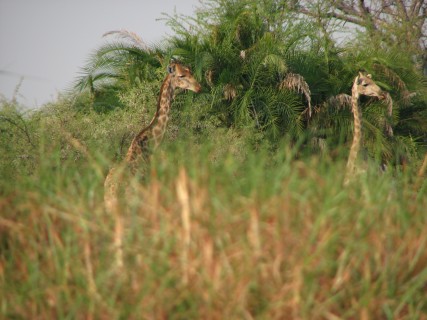 |
 |
The entire trip was extremely peaceful and serene, and was nearly silent but for people talking in the other mokoros. The whole area was quite photogenic, with the sun going down and the reflection of the trees and grasses on the water. We had dinner with Thompson, who went out of his way to set up a special transfer for us the next day. Instead of doing a short outing, then coming back and going to the airport, he set it up where we would boat up to the island where Mombo sits, and they would just pick us up on shore. That way, we'd get to stay out longer on our outing. Earlier at sundowner time, Thompson had correctly guessed how long we had been married – everyone else guessed 2 years or shorter, Thompson guessed 8 years. Thompson was born and raised in Botswana , but sounds like he went to school in Cambridge and has been performing Shakespeare his whole life. After dinner, we went back to our tent and went to sleep – with a fan this time.
 |
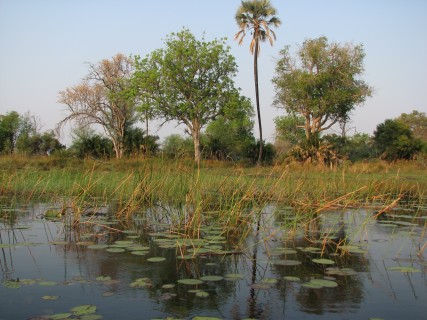 |